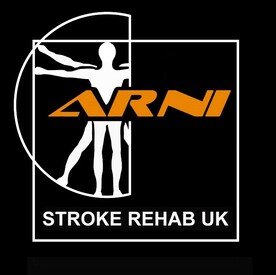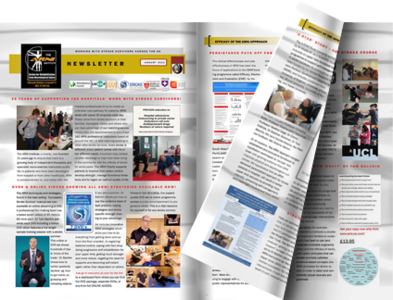Instructor Katie Godolphin doing Stroke Impact Scale and CAHAI with survivor Paul Rowlands at the start of ARNI Training Day yesterday!
www.arni.uk.com
#ArNiArmy #ARNIstrokerehab #arnistrokecharity #stroke #strokesurvivors #neuroplasticity #neurorehab
... See MoreSee Less
If you feel you can PLEASE SIGN the petition on Change.org below to stop the planned closure of a vital stroke rehabilitation centre in the Black Country...💔🏥, then write below to tell us you've signed it! The ARNI Stroke Rehab & Recovery community is rallying together to fight a proposal by the Walsall Healthcare NHS Trust that could see the much-needed 12-bed unit at Blakenall Row shut down.
You can find the petition here www.change.org/p/preserve-stroke-bed-rehabilitation-services-for-walsall-residents
After signing, please just verify via the email that will come to your mail box ;)
The potential closure has naturally sparked significant concern among patients, families, and local leaders; the centre provides crucial, specialised care for patients recovering after a stroke, helping them regain independence and rebuild their lives. For many people, this local facility is essential to their recovery journey.
Walsall Healthcare NHS Trust states the move is temporary due to ongoing staffing pressures and difficulties recruiting specialist nurses, but ARNI Stroke Rehab UK has found that campaigners fear it will become permanent. They argue that centralising care away from the community setting will lead to worse outcomes for patients who need that dedicated, local support system.
Local councillors are urging everyone affected by the proposed changes to have their say during the consultation period - so if you live in the Black Country and rely on these essential services, your voice is needed now more than ever! to make your opinion known to local health authorities.
Let's stand together to protect our essential local healthcare services and ensure stroke survivors get the care they deserve! 🙏💙
#ARNIstrokerehab #SaveOurStrokeUnit #BlackCountryNHS #WhistonHospital #StrokeRehab #CommunityAction #NHSMatters #WalsallHealthcare #LocalNews
... See MoreSee Less
Stretching and passive range of motion exercises can help minimize the effects of spasticity and can also activate neuroplasticity.
Therefore, having someone move your arm or leg for you can help repair the brain’s connection to your muscles. And the stronger the communication, the less spasticity you will experience.
www.arni.uk.com
#ARNIstrokerehab #arnistrokecharity #stroke #strokesurvivors #neuroplasticity #neurorehab #spasticity
... See MoreSee Less
Ever wondered how strong the link between chronic stress and stroke is?! 🤯🧠 Well, you're right to think about this - it's very real!!
Multiple studies and a large meta-analysis involving over 950,000 participants have confirmed that chronic, self-perceived psychosocial stress is significantly associated with a higher risk of experiencing a stroke. The increased risk is moderate, similar in magnitude to other known factors like diabetes.
So how exactly does something as seemingly intangible as stress affect our physical brain health? 🤔 The connection happens through a few key biological pathways: first, when we're stressed, our bodies activate the 'fight-or-flight' response, releasing hormones like cortisol and adrenaline. While useful in the short term, prolonged elevation of these hormones due to chronic stress leads to sustained high blood pressure, vascular inflammation and damage to artery walls over time.
Second, chronic stress can also lead to unhealthy coping mechanisms, such as poor diet, lack of exercise, smoking, increased alcohol consumption, and insufficient sleep. These lifestyle factors independently contribute to stroke risk by promoting high blood pressure and atherosclerosis (hardening of the arteries).
Intriguingly, recent research published in Neurology® suggests there might be a gender difference in vulnerability. One study on young adults found that women with moderate to high stress levels had a significantly higher risk of stroke compared to men, highlighting that women may need to take stress symptoms particularly seriously.
ARNI Stroke Rehab UK says that the good news is that stress is a modifiable risk factor: we can actively work to manage it. Simple strategies like finding joy in hobbies, regular physical activity (which is proven to reduce stress levels), and practicing mindfulness can make a real difference in protecting your heart and brain hea#ARNIstrokerehabi#strokeawarenesso#MentalHealthMattersn#stressmanagementM#brainhealths#ScienceNews##PreventionIsKeyenceNews #PreventionIsKey
... See MoreSee Less
Dates for the 2026 ARNI instructor course are now available
This is the ONLY FUNCTIONAL REHABILITATION & EXERCISE TRAINING QUALIFICATION CURRENTLY AVAILABLE IN THE UK which teaches experienced therapists and exercise instructors how to continue the rehabilitation path of stroke and other acquired brain injury survivor.
The course if for therapists and exercise instructors who are Level 3 and above or suitably qualified – who wish to teach functional rehabilitation & exercise training after stroke and receive regular recommendations/referrals from the ARNI Institute.
Find out more, and how to register for the accreditation here arni.uk.com/instructors/
2025 prices for the 2026 course if you pay for it in 2025
... See MoreSee Less
A goundbreaking study has just revealed that a new AI imaging tool could revolutionise stroke treatment by helping doctors spot deadly clots in patients more than an hour earlier than our current methods! 🧠
This innovative artificial intelligence technology works by rapidly analysing brain scans and immediately flagging the presence of large vessel occlusions (LVOs); the type of severe blood clots that cause the most debilitating strokes and require urgent removal. The speed at which this AI operates is truly astonishing.
Researchers found that by using this AI assistance, medical teams were able to identify these critical LVOs an average of over an hour earlier in the treatment pathway compared to the standard clinical workflow. 🕒💡 That hour is absolutely vital. It means patients can get to the specialised treatment they need, like mechanical thrombectomy, much faster.
This breakthrough is a massive win for modern medicine and highlights the incredible potential of AI to support our healthcare heroes and ultimately save more lives. It's not about replacing doctors, but giving them significant assistance in critical situations. The future of acute stroke care is looking better and faster every day 🤖🩺💙
www.arni.uk.com#ARNIstrokere#AIinHealthcareh#strokecaree#MedicalInnovationa#brainhealthe#FutureofMedicinei#NHS #breakthroughr#TimeIsBrainB#healthcaretechnologyology
... See MoreSee Less
On Friday, December 5, 2025, our very own brilliant Senior ARNI Instructor, Petr Pokorny , is undertaking a epic challenge! 🏃♂️💨 He will be running 100 miles along the South Downs Way, from East Dean to Worthing and back again! 🤯 This astonishing feat is all in an effort to raise awareness and much-needed funds for ARNI (Action for Rehabilitation from Neurological Injury).How absolutely brilliant is that?! 🤩
Petr regularly does efforts to raise funds for ARNI - his dedication to supporting stroke survivors goes is truly inspiring. Let's show Petr our support! Every donation helps ARNI continue their vital work. Sponsoring him is super easy: just head over to his JustGiving page via the link below (or in the comments!). Every single pound makes a difference. Please donate what you can and share this post far and wide! Let's cheer him on and help him reach his goal of £1,500! 💪💙✨ THANK YOU SO MUCH!!
www.justgiving.com/page/petr-pokorny-5?new#arnit#StrokeRecoveryk#100milerun1#southdownswayt#charitychallengey#petrpokornye#inspirationn#justgivingJ#runforarniR#communitysupportitySupport 💖
... See MoreSee Less
Walking is a critical part of any post-stroke strengthening program. It keeps people from being sedentary and keeps muscles active and flexible.
Call us on 0203 053 0111, or email support@arni.uk.com to find out if there's a trainer who can help you with your walking.
www.arni.uk.#strokesurvivorsi#neurorehabr#arnistrokecharitya#neuroplasticityi#ARNIstrokerehabr#neurorehabilitationa#strokesurvivorscanrscan
... See MoreSee Less
A great present for a stroke survivor: ALL 7 ARNI exercise online videos.
Amongst many other things, you will learn from these how to get down and up from the floor, balance, walk and turn without problem, become strong and robust.. and tackle all sorts of activities of daily life that you hadn’t dreamed possible after stroke.
#ARNIstrokerehab #arnistrokecharity #stroke #strokesurvivors #neuroplasticity #neurorehab #neurorehabilitation #strokeexercise #neuroplasticity #strokesurvivorscan #neurorehab
www.strokesolutions.co.uk/product/successful-stroke-survivor-dvds-full-set-incl-bonus-dvd-trainin...
... See MoreSee Less


